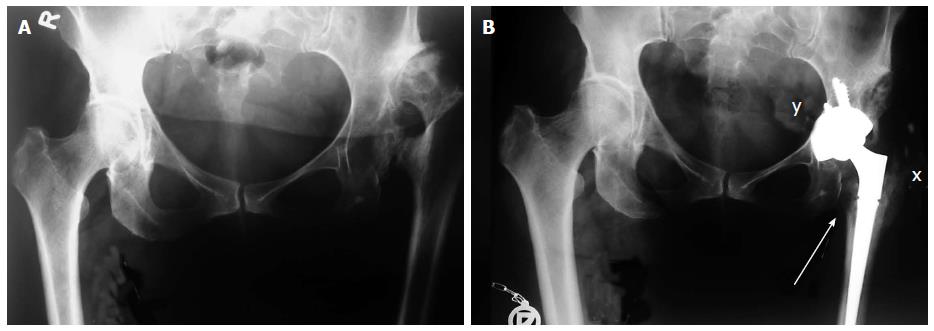Copyright
©2014 Baishideng Publishing Group Inc.
World J Orthop. Sep 18, 2014; 5(4): 412-424
Published online Sep 18, 2014. doi: 10.5312/wjo.v5.i4.412
Published online Sep 18, 2014. doi: 10.5312/wjo.v5.i4.412
Figure 6 X-rays of patient with Crowe type 4 dysplasia on the left side and normal hip on right side.
A: Preoperative X-ray with secondary osteoarthritis due to dysplasia, neoacetabulum formed superolaterally from original, true acetabulum and significant leg length discrepancy; B: Postoperative X-ray with implanted uncemented acetabular cup and femoral stem. Acetabular cup is protruding beyond the Kohler’s line inside the pelvis (marked with y) and secured with 3 additional screws. Lesser trochanter is brought distally to the normal level so there is no leg length discrepancy postoperatively (marked with a single arrow). Modified direct lateral approach was used and posterior part of the gluteus medius and vastus lateralis together with the external rotators were detached with the chisel on a thin flake of bone, now they are completely attached and healed to greater trochanter (marked with x).
- Citation: Bicanic G, Barbaric K, Bohacek I, Aljinovic A, Delimar D. Current concept in dysplastic hip arthroplasty: Techniques for acetabular and femoral reconstruction. World J Orthop 2014; 5(4): 412-424
- URL: https://www.wjgnet.com/2218-5836/full/v5/i4/412.htm
- DOI: https://dx.doi.org/10.5312/wjo.v5.i4.412









